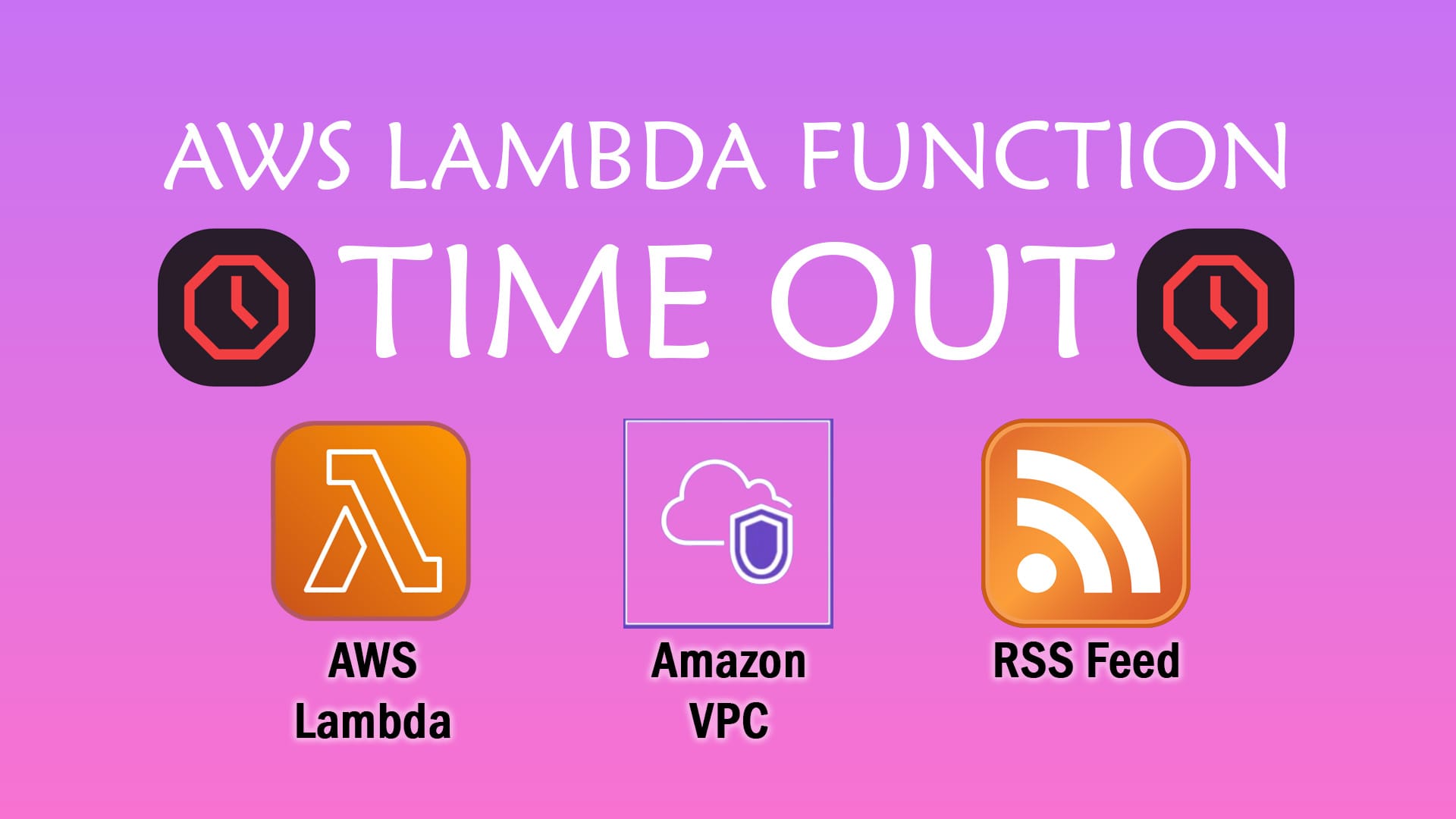Lambda Function Internet Connectivity Issues in AWS - And how to resolve it!

When deploying AWS Lambda functions, especially those requiring access to both the internet and internal AWS resources like an Amazon RDS MySQL server, you might encounter connectivity issues that can be frustrating to diagnose and resolve. This post will walk you through a common problem that developers face and offer solutions to ensure your Lambda functions can perform as expected.
So you’ve set up a Lambda function designed to read RSS feeds from the public Internet and import the data to an RDS MySQL database. Following AWS documentation, you've configured your Lambda to run within a VPC (Virtual Private Cloud). However, you encounter something like the following error message when executing the function:
{
"errorMessage": "2024-08-31T10:14:39.***Z ******** Task timed out after 30.16 seconds"
}Despite configuring a 30-second timeout for the Lambda function, it fails to connect to the Internet. You've verified the Internet gateway, NAT gateway, and outbound security group rules, yet the problem persists. You may be wondering, "What’s going wrong?"
So when you place a Lambda function inside a VPC, it no longer has direct access to the Internet by default. This is because Lambda functions within a VPC need to follow the routing rules and security group configurations of that VPC. If not correctly set up, your function will time out as it attempts to reach the external RSS feed.
Common Pitfalls:
- Incorrect Subnet Routing: If your Lambda function is in a private subnet, the route table for that subnet must include a route pointing to a NAT gateway for internet-bound traffic.
- VPC Configuration Complexity: Often, developers configure Lambda functions inside a VPC even when it’s not required, which complicates connectivity unnecessarily.
- Security Group Restrictions: Ensure that the security groups attached to your Lambda function allow outbound traffic to the Internet.
Solution Path
1. Review VPC Configuration:
- Subnet Selection: Ensure your Lambda function resides in a subnet that has a route to the NAT Gateway. Without this, Internet connectivity will fail.
- NAT Gateway: Confirm that your NAT Gateway is correctly configured and associated with the correct route table.
2. Simplify with Two Lambda Functions:
- Lambda Function 1 (fetch RSS Feed): This function does not need to be within a VPC. It fetches the RSS feed data and then triggers the second Lambda function.
- Lambda Function 2 (store in RDS): This function, residing within the VPC, handles the database interaction, ensuring that sensitive data remains secure within your private subnet.
By decoupling the Internet-facing and internal database operations, you avoid the complexities and costs associated with NAT Gateways. This method also streamlines your architecture and reduces the risk of connectivity issues.
Final Thoughts
Sometimes, despite all correct configurations, a Lambda function may still fail initially but work after some time, likely due to delayed DNS resolution, propagation delays, or temporary networking issues within AWS infrastructure. However, relying on "it fixed itself" is not a sustainable solution. Understanding how AWS VPCs interact with Lambda functions is crucial to proactively designing your infrastructure, helping you avoid common pitfalls and ensuring robust, reliable cloud applications.
When working with AWS Lambda inside a VPC, always assess whether your Lambda truly needs to be in the VPC—if not, avoid the added complexity. If VPC integration is necessary, meticulously configure all routing and security settings. Alternatively, consider a dual Lambda function architecture to separate internet-facing and internal operations, simplifying your network setup and reducing potential connectivity issues.
Happy Functional Automated Clouding!

